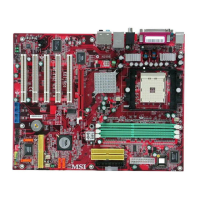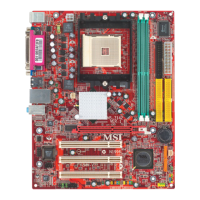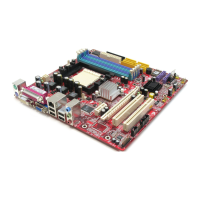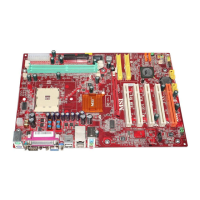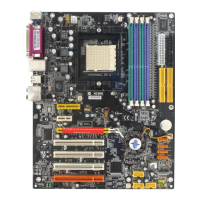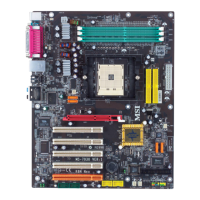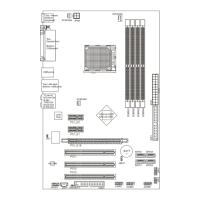MS-6702E ATX Mainboard
5-2
IntroductionIntroduction
This section gives a brief introduction on the RAID-related background knowledge and
a brief introduction on VIA SATA RAID Host Controller and the onboard Promise FastTrak
579 controller. For users wishing to install their SATA RAID driver and RAID software,
proceed to Driver and RAID Software Installation section.
RAID Basics
RAID (Redundant Array of Independent Disks) is a method of combining two or more
hard disk drives into one logical unit. The advantage of an Array is to provide better
performance or data fault tolerance. Fault tolerance is achieved through data redundant
operation, where if one drives fails, a mirrored copy of the data can be found on
another drive. This can prevent data loss if the operating system fails or hangs. The
individual disk drives in an array are called “members”. The configuration information of
each member is recorded in the “reserved sector” that identifies the drive as a member.
All disk members in a formed disk array are recognized as a single physical drive to the
operating system.
Hard disk drives can be combined together through a few different methods. The
different methods are referred to as different RAID levels. Different RAID levels represent
different performance levels, security levels and implementation costs. The RAID levels
which the VIA VT8237 SATA RAID Host Controller supports are RAID 0 and RAID 1; and
Promise FastTrak 579 SATA RAID Host Controller supports are RAID 0 , RAID 1 and RAID
0+1. The table below briefly introduced these RAID levels.
RAID Level No. of Drives Capacity Benefits Provided by Benefits
RAID 0 (Striping) 2 Number drives
* Smallest size
Highest
performance
without data
protection
VT8237/
20579
Highest performance
without data
protection
RAID 1 (Mirroring) 2 Smallest size Data protection VT8237/
20579
Data protection
RAID 0+1
(Striping/Mirroring)
* O nly for Prom ise
FastTrak 579 Serial
4 2*smallest size Highest
performance
with data
protection
FastTrak
20579
Highest performance
with data protection
MSI Reminds You...
If you wish to include your current bootable Serial ATA drive using the
Windows NT 4.0, 2000, XP or Server 2003 operating system as part of a
bootable disk array on your RAID controller. You MUST install the Win-
dows NT4, 2000, XP or Server 2003 driver software first onto this drive
while it is still attached to your existing disk drive controller.

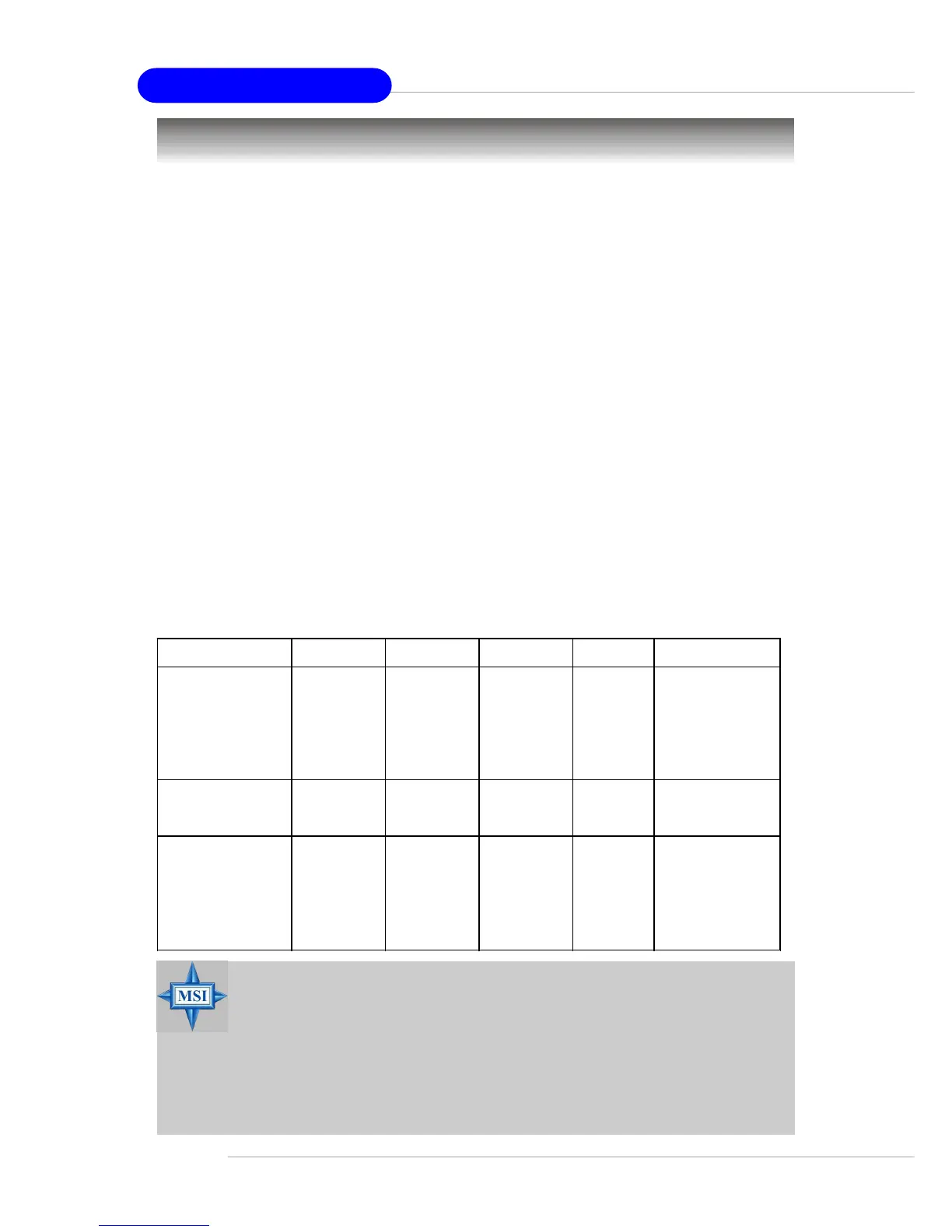